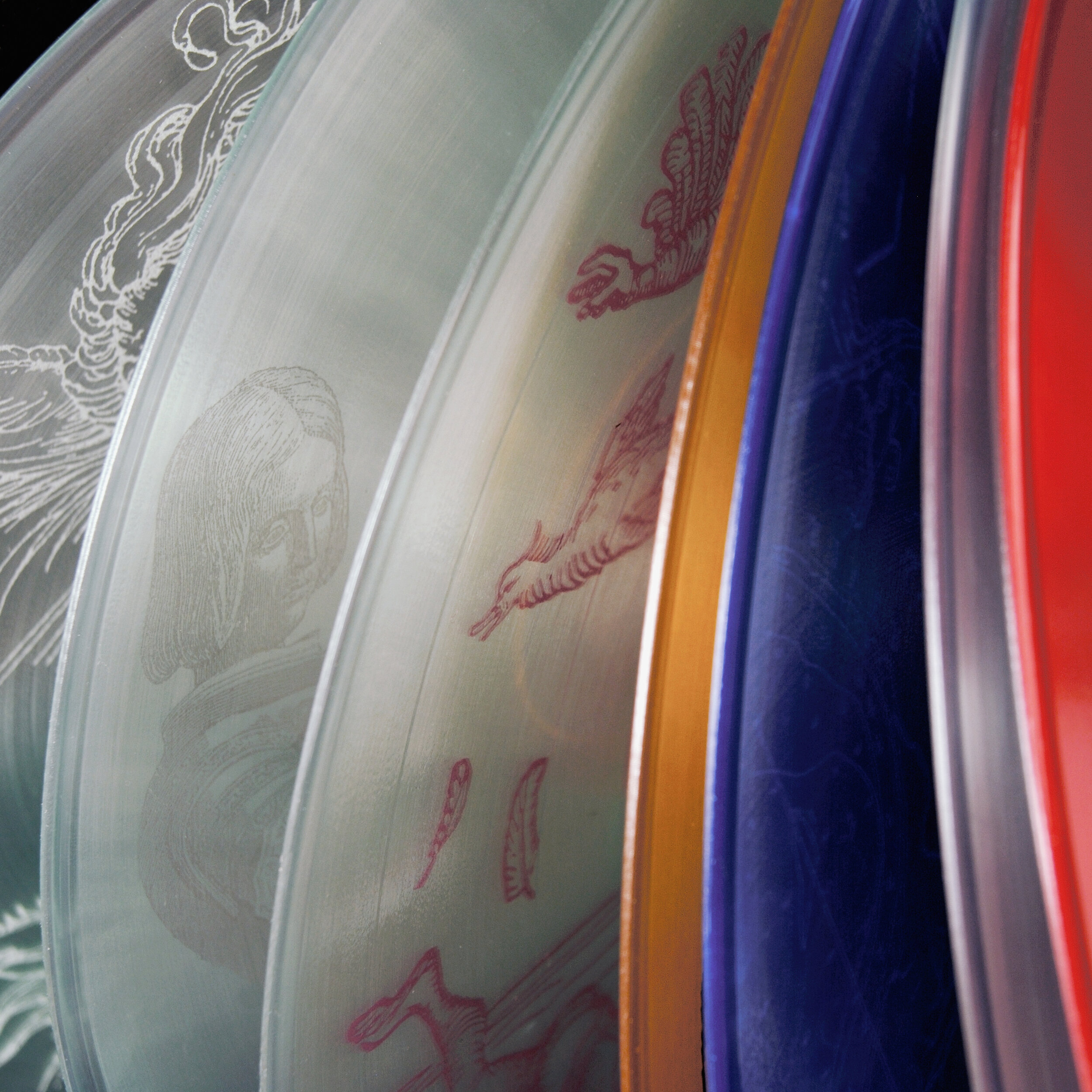Laurie Spiegel
Haromnices Mundi
Lanthanides Series
2003
Table of the Elements
[Promethium] SWC-LP-61
Phono LP, silkscreen
Laurie Spiegel is one of those rare composers in whom head and heart, left brain and right brain, logic and intuition, merge and even exchange roles. Though she is one of the highest-tech computer composers in America, Spiegel is also a lutenist and banjo player, and sees the computer as a new kind of folk instrument. She makes her most intuitive-sounding and melodic music from mathematical algorithms, and her most complex computerized textures by ear and in search of a desired mood. Form and emotion are as difficult to separate in her music as they are in that of J.S. Bach.
Having worked with analog synthesizers since 1969, she sought out the greater compositional control which digital computers could provide and wrote interactive compositional software at Bell Labs from 1973-79. She later founded New York University's Computer Music Studio, and became famous in rock music circles for her music software for personal computers.
Despite her innovative involvement with technology, Spiegel the composer has never been dominated by Spiegel the computer technician. Her music from the 70s used compositional algorithms to generate music in an accessible, minimalist vein. "Minimalism" may still aptly describe the slow movement of pitch in these pieces, but it gives no hint of their complex timbres, glacial momentum, and cathartic climaxes. Such vibrant, expressive music could only have come from a composer who put her intuition and imagination first, yet who had the immense technical know-how needed to meet the challenges they posed.
Since breaking away from downtown New York scene in the early 1980s, a scene she had helped create, Spiegel has lived as one of New York's most independent musicians, supporting herself by her software and circulating her music privately. The track on this release—never before available in its entirety—is one of her most legendary: a realization of Kepler's "Harmony of the Planets,” originally commissioned in 1975 by Dr. Carl Sagan for inclusion on the "Golden Record" that accompanies the Voyager II spacecraft, and is now far beyond the orbit of Pluto in the vastness of interstellar space.
“Some pretty amazing heartfelt molecular inner-happening soundscape soul journeys."
Terry Riley
“In 1977, American astronomer Carl Sagan selected the composer Laurie Spiegel's computerized realization of Johannes Kepler's 1619 treatise ‘Harmony of the Worlds’ for inclusion aboard the Voyager 1 and 2 spacecraft's "Golden Record’. Kepler's ‘Harmony of the Worlds’ was the lead cut on a collection that held recordings of natural sounds, greetings in 55 languages, selections from Beethoven, Mozart, Blind Willie Johnson, and Chuck Berry, for the sake of demonstrating to other life forms in the galaxy that there is intelligent life on our planet. And now, Laurie Spiegel's music has traveled to the edge of our solar system.
“Even if Spiegel's music weren't already launched into the firmament, it would finds its natural home there; it's when she contemplates orbits, heavenly bodies, and the cosmos through sound that her imagination is unparalleled. While Kepler mused that the ‘Harmony of the Worlds’ would be audible only to the ear of God, what reaches human ears via Spiegel's realization is bracing, menacing, and disorienting, the piercing tones not unlike a choir of air raid sirens. An alien life form encountering it on Voyager's ‘Golden Record’ would conclude that our world was a maddening, maniacal place.”
Pitchfork
“Of all the records listed on Discogs, none is rarer than a first pressing of The Golden Record. To begin with, only two copies of it exist* — and, what’s more, both of those are currently located roughly 15 and 19 billion kilometers away from Earth, and traveling fast. (And you thought paying shipping on Japanese imports was expensive.) Barring some unforeseen quirk in the multiverse, no human will ever lay his or her hands on the thing. But now, you have the chance to own a vinyl copy of Laurie Spiegel’s ‘Harmonices Mundi,’ an avant-garde composition selected for the project by a NASA committee led by Carl Sagan himself.
“Designed to function as a sonic greeting card to any extraterrestrials that might happen across one of the two Voyager spacecraft, launched in 1977, The Golden Record includes a selection of natural sounds (wind, thunder, whales); spoken greetings in 55 languages; and music ranging from Bach and Mozart to Senegalese percussion and Javanese gamelan. Spiegel, a pioneering computer musician, adapted Johannes Kepler’s 1619 score for an approximation of the fabled ‘music of the spheres’ by programming astronomical data into her computer and letting the drones rip; her recording opens the ‘Sounds of Earth’ portion of The Golden Record.
“‘Harmonices Mundi’ was given a single-sided pressing on Table of the Elements in 2003, and now Boomkat has turned up a trove of warehouse copies. If you want it, order it now — or start working on a warp drive for your Tesla.”
SPIN
“Were Carl alive today—he died in 1996 at the age of sixty-two—I think he’d be delighted.”
The New Yorker





